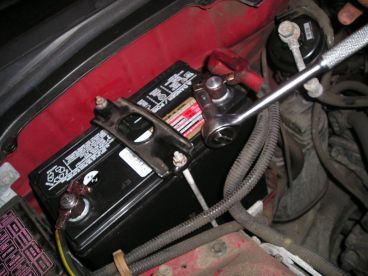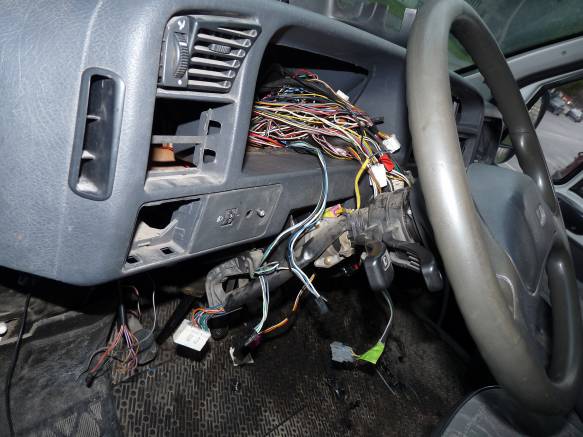Picture this: you’re late for work, and you’re ready to drive as quickly as possible to reach the office before your boss yells at you. But, unfortunately, you turn the ignition key, and your car won’t start.
This is because your 40 amp ignition fuse keeps blowing. A blown ignition fuse could have occurred for several reasons.
- It could have been a frayed or loose wire that’s gone completely bad.
- Additionally, multiple systems often run through the same fuse or circuit, and therefore, your ignition system could share its power source with another system. This means that the problem may not even be in your ignition system, but it could be a short circuit or a malfunction in any of the connected systems.
A blown fuse also results in other electrical problems in less extreme situations, such as not using your radio, backup lights, or interior lights, or because a few of your climate control features are not working correctly

Table of Contents
Why does my 40 Amp Ignition Fuse Keep Blowing
If the 40 amp ignition fuse in your vehicle keeps blowing, it could be a sign of a more serious problem. This could be caused by a short circuit or a malfunctioning component that is drawing too much current. It is important to have this issue diagnosed and repaired by a professional mechanic as soon as possible to prevent further damage to the vehicle.
Here’s what you need to do.
- Turn off your vehicle and find the fuse box. In many cars, it’s underneath the dashboard on the driver’s side. However, there could also be a second fuse box under the hood. To know the exact location of each, have a look at your owner’s manual.
- Once you’ve identified the blown 40 amp ignition fuse, pull it out using fuse pullers or pliers. The blown fuse will be easy to identify because the wire inside it will have melted or burned from electrical current.
- Once you have confirmed the burnt ignition fuse, find a new fuse identical to your replacement. Ensure that the new fuse is the same type and voltage; in this case, a 40 amp fuse. If you replace a fuse with a different voltage, it can cause damage to the component that the fuse is supposed to be protecting.
There are 3 primary types of car fuses. All of them use burnable or breakable filaments. They are:- Plastic fuses with twin prongs
- Cylindrical glass fuses
- Cylindrical plastic fuses
- Next, all you need to do is simply insert the new fuse into the place of the old one, taking care to ensure that it is all the way in. Then, if you’re still not entirely sure, compare it to the fuse next to it to see if it is appropriately set.
- Return your fuse box to its normal state.
- Turn your car on, and test the component to see if it works with the new fuse in place. If it works, then you’ve successfully replaced the 40 amp ignition fuse! If none of these steps worked, please consult a mechanic to diagnose the problem further.
Top 3 Reasons Why 40 Amp Ignition Fuse Keeps Blowing
Faults in the Ignition System
If the sentence above worries you, don’t be afraid because, on the plus side, there are only a few possible reasons that your 40 amp ignition fuse keeps blowing. For instance, if the current is supplied from the battery or alternator to the ignition coil through a relay, you know that the problem is definitely in the ignition switch. The problem could also lie in the wires leading to the switch.
A bad ballast resistor could blow fuses inside the distributor, but this is not likely to happen unless the wiring in your car might have been poorly done when you took it to the auto shop.
Solution: Consult a professional.
In this situation, you’ll need to consult a mechanic or automotive professional. They will have the tools and other equipment necessary to repair and take care of your car.
Battery Issues

If your 40 amp ignition fuse keeps blowing, you could also have problems with your battery. This could be because you have a bad connection with a bad battery cable, the battery itself, or on the starter.
Solution: Remove the battery cables.
You will need the following tools:
- A crescent wrench
- Vise pliers
- 10mm wrench or socket
- A hammer
- Battery terminal cleaner
- A wire brush
- Gloves
- Safety glasses
To remove the battery cables, follow these steps.
- First, remove the battery cables.
- Next, using the terminal brush, clean both the positive and negative terminals.
- Inspect the cables from the battery to their respective connection points, which are the starter and the block, before you reconnect the terminals.
- Take care to ensure that the cables do not have any broken insulation or dark discoloration in the insulation. If you notice broken insulation or discoloration, this could indicate that there is too much heat or that there is a weak spot in the cable.
- Now, take the wrench (or socket), and use it to remove the ground cable.
- Once you’ve removed the cable, take the wire brush and clean the block’s surface.
- After it is clean, reconnect the ground cable to the block.
- Now, you must move to the starter. Using a 5/15 drill bit, remove the solenoid wires.
- Using a 1/2 or 9/16 drill bit, remove the battery from the starter.
- Use the wire brush again to clean both surfaces.
- Inspect the cable ends, making sure that they are firmly secured.
- Reattach the cables.
Problems in the Wiring

As we mentioned in the introduction of this article, there is also a good chance that your ignition system shares a common circuit with something motorized, such as the fuel pump, cooling fans, or starter. As a result, this is the source of what keeps causing the 40 amp ignition fuse to keep blowing.
In short, if your ignition system is overloaded because of the electric motor drawing excessive amounts of voltage that cause it to spin faster, a fuse can blow much more quickly.
If you suspect that the problem lies in the wiring, scrutinize your wires. This is because the wire’s insulation is likely to have been burned through by the hottest parts of the car’s engine.
Solution: Consult a professional.
While you can change a 40 amp ignition fuse on your own with a few tools, it would be best to consult a mechanic or electrician if you suspect that the problem lies in the wiring of your car.
Frequently Asked Questions
What would cause my ignition fuse to keep blowing?
A short circuit, faulty ignition component, or wiring issue could cause the ignition fuse to keep blowing.
How do you fix an amp that keeps blowing fuses?
To fix an amp that keeps blowing fuses, check for short circuits, damaged components, or wiring issues, and make necessary repairs or replacements.
How do I know if my 40 amp fuse is blown?
Inspect the fuse visually. A blown 40 amp fuse will typically have a broken or melted metal strip inside the plastic casing.
Do I need a bigger fuse if it keeps blowing?
No, installing a larger fuse without addressing the underlying issue could result in damage to your electrical system or components.
Conclusion
A blown 40 amp ignition fuse can cause you to feel a lot of stress and worry, especially because you need your car to work on a daily basis.
You can also use this all purpose cleaner for your car.
In this article, we covered the causes behind why the 40 amp ignition fuse keeps blowing, as well as a simple method to change the ignition fuse on your own.
